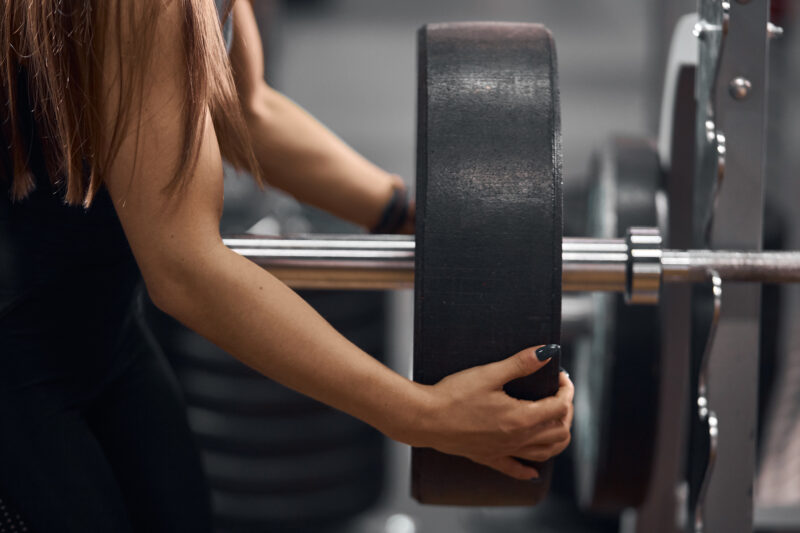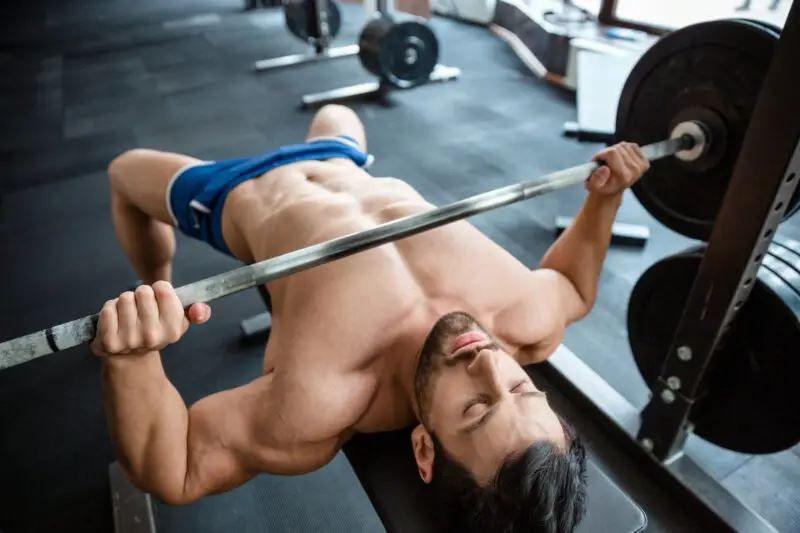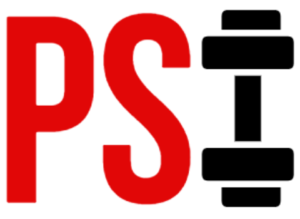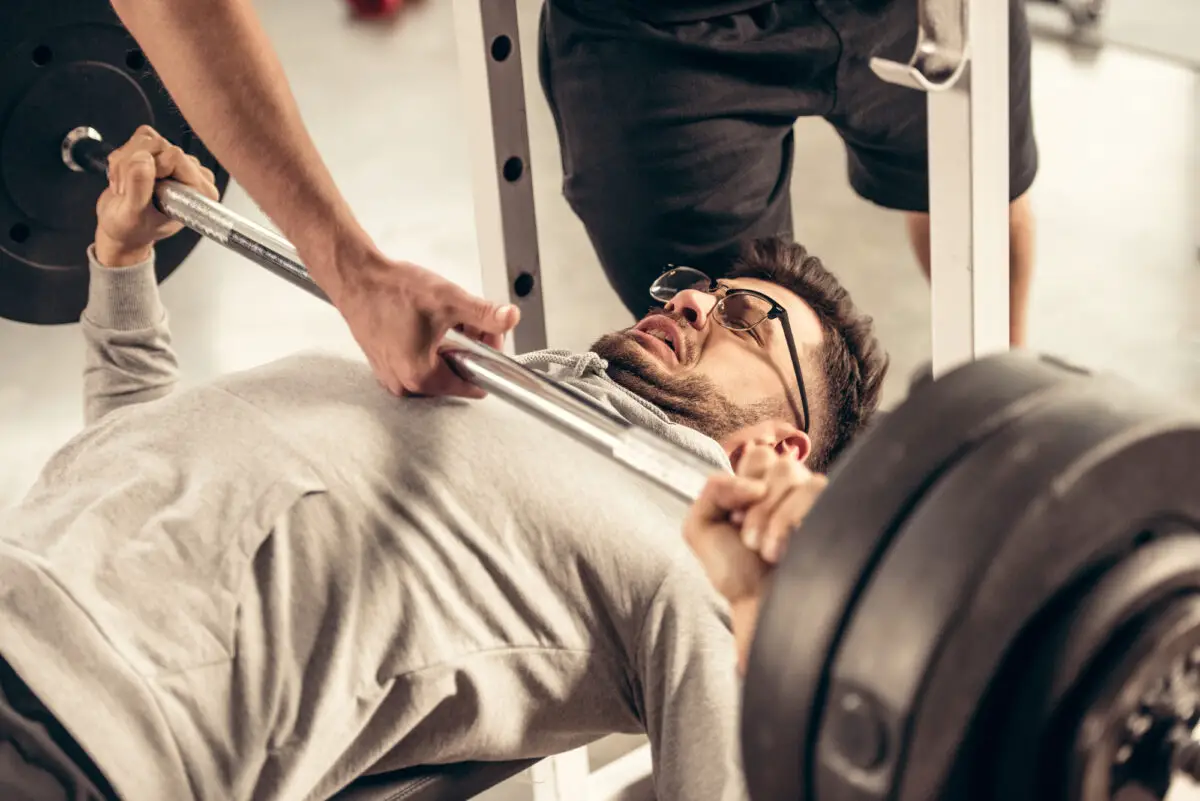Ah, the bench press.
This is one of the most famous exercises in existence.
After all, when you tell most people that you lift, what’s the first question they ask you? Is it, “How much do you bench, bro?”
And, of course, having a strong bench is more than enough to impress fellow gym bros and earn their respect.
But, do you need to bench press if you want to get a bigger chest? Do you need to bench press at all?
Today, we’ll take a look at that particular question.
Do You Have to Bench Press For a Bigger Chest?
To be honest, no, you don’t. But before you click the Back button furiously, hear me out:
You do not HAVE to bench press to get a bigger chest. There are many exercises that work the pecs besides the bench press. With that being said, the bench press is a valuable exercise, if you are able to preform it properly.
Whether you choose to do a given exercise should depend on numerous factors, and not just on whether an exercise is popular or not.
Many beginners start bench pressing because this is usually the first exercise they are introduced to, and everyone praises it. So, naturally, beginners bench press every week without knowing if this is the best way to go about their training.
Yes, the bench press can be valuable for muscle growth. For one, it does a great job of targeting the chest muscles. EMG data shows that the bench press, particularly when done with a wide grip, does a great job of training our pecs (1, 2, 3, 4).
The bench press also has an excellent overloading potential, and it’s not uncommon for lifters to eventually press 300, 400, even 500 pounds. And you can bet that with each milestone, your chest will be more prominent.
But, with that said, the bench press is not mandatory for muscle growth, and it can carry some adverse effects. Let’s take a look at some of them.
Suggestion: If you don’t bench because of elbow issues, you might want a try a good pair of elbow sleeves. The Iron Bull Strength Elbow Sleeves are serious sleeves for serious weightlifters. They provide a great deal of support and comfort. Click this link to check them out on Amazon.

Two Things to Keep In Mind For The Bench Press
While most lifters enjoy the bench press and train it regularly, there are two things you should remember:
-
The Bench Press Is Not For Everyone
We are all different, and not all exercises affect us in the same way. Some folks find that the bench press trains their chest quite well; others can’t seem to feel their pecs working.
If you find that the regular bench press doesn’t train your chest quite as it should, you can experiment with:
- a different bench;
- using dumbbells instead of a barbell;
- lifting lighter weights for more reps;
- trying a different sit-up and working on your arch;
- varying the incline on the bench (going from flat to a slight incline, for example);
In most cases, one of the above solutions should work. Still, if you can’t seem to feel the bench press working well for you, there is nothing wrong with switching the exercise for something else.
Another camp of folks who should avoid the bench press, even if they usually feel it working their pectorals well, are those with shoulder issues. Put simply, if you find that an exercise bothers your joints, either drop the weight to review your technique or switch it for something else.
-
The Bench Press Is Not The Best Chest-Builder
Ah, this is where I’ll probably ruffle some feathers, but it needs to be said:
In terms of pure chest activation, the regular barbell bench press is not the best chest-builder. One of the functions of the chest muscles is to adduct the arm (5). In other words, the chest works to bring the arm toward the midline of the body.
The problem with the typical bench press is that the barbell prevents that from happening. Since the movement is guided by the barbell and your wrists and arms are in a fixed position, you are not able to achieve peak contraction when you press the weight away from your body. What’s more, this exercise also heavily involves your front delts and triceps (2, 3, 4).
In other words, the barbell press can only partially target the pectoral fibers, and no matter how you try to modify it, you will never be able to make it work your chest more. Of course, this is not to say that you can’t pump up your chest with a barbell press; it just means that other exercises would better target your chest.
For example, in terms of sheer chest recruitment, the cable fly is better because it works the chest precisely as intended – having you bring your arms toward the midline of your body against resistance.
When it comes to pressing, using dumbbells will allow you to target your chest better because you can adduct your arms as you press the weight up (6).

The Role Of Progressive Overload In Long-Term Muscle Growth
Many trainees do the same things over and over, yet wonder why they can’t seem to make any progress in the long run. This is because if you’re not focused on progressing, you’re not training; you’re exercising.
Now, there is nothing wrong with exercising. But, if you want to build as much muscle as possible, you need to push for progress – this is where the principle of overload comes in:
For a muscle to grow, strength to increase, or any other athletic characteristic to improve, you must place more and more stress on your body. Merely doing the same thing and lifting the same weights won’t cut it.
Eventually, the body reaches a point where it is perfectly capable of handling a given level of stress. And because it doesn’t have a reason to improve further, it remains the same.
This is why, over time, you need to push yourself to do a bit more:
- More repetitions with the same weight;
- More weight on the bar;
- The same amount of work but in less time;
- Train a given muscle group more frequently throughout the week;
- Doing more sets and reps;
There are many ways to challenge yourself. If you regularly find yourself cruising through your workouts, realize that you’re leaving results on the table.
What Can We Do For Chest Development?
Okay, since the bench press is not the best chest-builder and it’s not mandatory, what else can we do for pectoral development? Here are four great options:
1) Dumbbell Press
As we discussed above, pressing dumbbells instead of a barbell could prove to be more beneficial as they allow for greater adduction of your arms, which may lead to greater chest activation.
You can check out this video where Mike Thurston goes more in-depth on this exercise and how to perform it properly.
2) Dips
Chest dips are another exercise often praised for its ability to help us build our pecs. The only thing you should keep in mind here is that dips can be stressful on your shoulders, so you should avoid lowering yourself too much and avoid attaching too much weight on yourself.
In this video, Jeff Nippard explains the dip thoroughly.
3) Chest Fly
Chest flys are one of the best exercises you can do to target and isolate your pectorals. It works your chest muscles precisely as intended – having you adduct your arms against external resistance.
When doing cable flyes, in particular, the angle of attack will help you emphasize one portion of your chest more than the others. For example, doing high cable flyes tends to train your mid and lower chest better while doing low cable flyes works your upper chest to a higher degree.
Here is a video that thoroughly explains everything in detail.
4) Push-Ups
The push up is similar to the barbell bench press in that your hands are fixed, and you can’t adduct your arms at the top position. Still, this is an invaluable exercise for your chest because you can do it anywhere, you don’t need any equipment, and there are dozens of amazing variations to pick from.What’s more, push-ups are essential for shoulder health as they help train and develop the serratus anterior muscle, which plays a vital role in scapular stability and shoulder health (7).
Thank you for reading. If you liked this article, please share it and then………. go Pump Some Iron!
Follow me / Pump Some Iron on Instagram for updates @pump.some.iron

